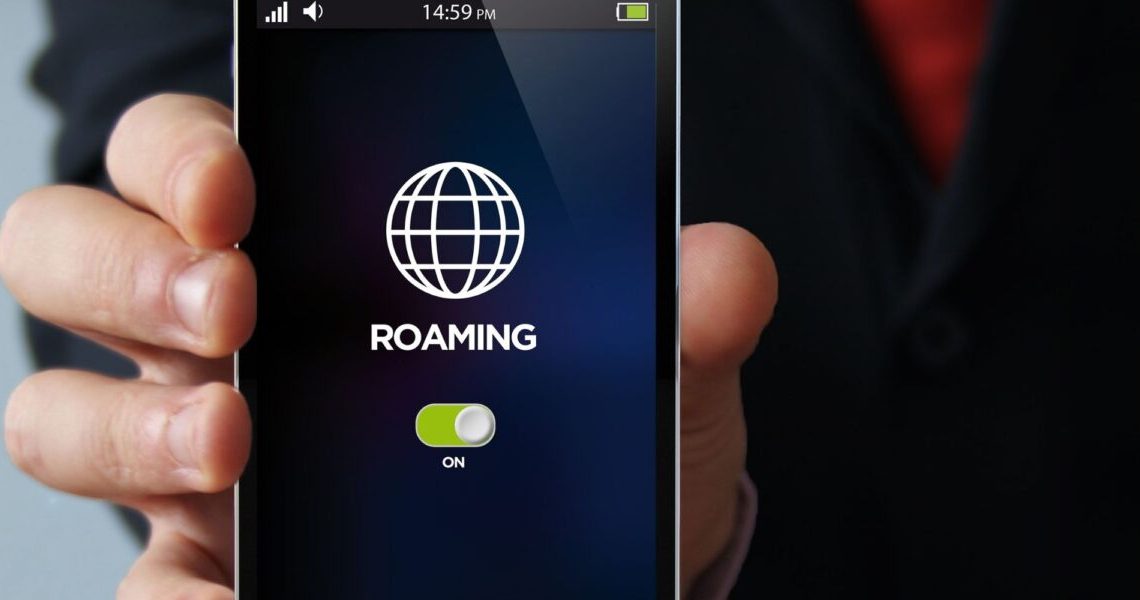
Understanding Data Roaming and Its Impact on Your Mobile Experience
In an increasingly interconnected world, the ability to stay connected while traveling has become a fundamental expectation for many. Navigating the complexities of mobile services when venturing beyond domestic borders can transform a seamless journey into an overwhelming challenge. Understanding how communication systems operate across different territories paves the way for informed decisions and enhances the overall travel experience.
Travelers often encounter various options when it comes to staying in touch, ranging from local SIM cards to international plans offered by service providers. This myriad of choices can lead to confusion if not approached with clarity. It’s essential to grasp the intricacies of these options and the implications they hold for connectivity and expenses, ensuring a smooth transition from familiar surroundings to foreign locales.
Moreover, grasping the underlying mechanisms that facilitate communication while abroad provides valuable insights into how to make the most of mobile technology. Awareness of potential pitfalls, such as unexpected charges, can serve as a safeguard against unwelcome surprises at the end of a trip. By equipping oneself with the right knowledge, travelers can maintain connectivity without compromising their budget.
Understanding Data Roaming Basics
When traveling beyond local boundaries, connectivity is essential for maintaining communication and accessing online services. This section delves into the fundamental aspects of utilizing mobile network services outside the usual coverage area, focusing on how devices interact with external networks.
-
Definition: The process of using mobile services while situated in a different region than the home network.
-
Functionality: Devices connect to available networks based on agreements between the home provider and local carriers.
-
Importance: Ensures uninterrupted access to the internet, calls, and texts while traveling.
Understanding the underlying mechanics helps travelers make informed choices regarding their telecommunication plans and expenses.
-
Technology: Different standards and protocols govern how networks communicate.
-
Cost Implications: Varying pricing models can significantly affect overall expenses incurred abroad.
-
Settings: Proper adjustments on devices can optimize performance and minimize unforeseen charges.
Being well-informed about these concepts can lead to a more seamless and enjoyable experience while away from home.
Why Data Roaming Matters for Travelers
When exploring new destinations, staying connected is essential for modern adventurers. Access to the internet enables seamless communication, navigation, and real-time information, enhancing the overall travel experience. The ability to use a mobile device abroad without interruption helps ensure that travelers remain informed and secure.
Convenience plays a significant role in the importance of mobile connectivity. With reliable internet access, individuals can easily book accommodations, find local attractions, or share experiences with friends and family in real time. This instant connectivity fosters a sense of confidence, allowing explorers to venture off the beaten path while still having access to vital resources.
Cost-effectiveness is another crucial aspect. While some may assume that using their standard plan overseas could be exorbitantly expensive, many providers offer tailored solutions that mitigate financial strain. By choosing the right options, travelers can enjoy the benefits of connectivity without the fear of unexpected charges upon returning home.
Furthermore, having access to the web worldwide can enhance safety. Being able to contact local authorities, access emergency services, or navigate safely through unfamiliar areas can provide peace of mind. For travelers seeking adventure, this connection becomes an essential tool to ensure a secure and enjoyable journey.
How Charges for Roaming Work
The financial implications of using mobile services while abroad can often catch users off guard. Understanding the various factors that contribute to these costs is essential for anyone planning to utilize their devices outside their home country. This section delves into the intricacies of how charges are accrued during international mobile usage.
Key Factors Influencing Costs
-
Data Usage: The volume of information transmitted over the network plays a crucial role in determining charges. Higher data consumption leads to increased fees.
-
Service Provider Agreements: Different mobile network operators may have distinct arrangements and pricing structures with foreign carriers, impacting the final billing.
-
Location: Regions and countries can have varying rates based on local regulations, market competition, and the nature of agreements between carriers.
Types of Charges
-
Per-Megabyte Fees: Users may be billed based on the total megabytes consumed, with costs quickly escalating for heavy usage.
-
Daily Charges: Some operators offer daily plans that allow users unlimited access for a set fee during a specific period.
-
Bundle Options: Many companies provide packages that can be purchased prior to traveling, allowing for reduced rates on data transfers.
By thoroughly researching and contemplating these elements, individuals can make informed decisions regarding their mobile service use while abroad, potentially saving money and avoiding unexpected charges.
Tips to Minimize Roaming Costs
Traveling abroad can lead to unexpected expenses, especially when it comes to connectivity. Being proactive and adopting certain strategies can significantly reduce charges while enjoying seamless communication during excursions. Below are some practical recommendations for managing expenses effectively.
Choose the Right Plan
Before embarking on a journey, it’s wise to explore available mobile plans offered by your carrier. Many providers offer special packages tailored for international travelers, featuring reduced rates for calls, texts, and data usage. Compare options to find the most suitable plan that aligns with travel needs.
Utilize Wi-Fi Whenever Possible
Taking advantage of public Wi-Fi networks can help in cutting down on mobile data expenses. Many cafes, hotels, and public areas provide free internet access. Make a habit of connecting to Wi-Fi for browsing, messaging, and using apps that require internet connectivity, thus conserving mobile data usage significantly.
Choosing the Right Mobile Plan
Finding an appropriate mobile plan is crucial for ensuring seamless communication while traveling. Various factors come into play when determining which option aligns best with individual requirements. Understanding the specific features offered by different carriers can lead to a more satisfying experience, avoiding unexpected charges and limitations.
Key Considerations
-
Usage Patterns: Assess typical usage for calls, texts, and data. This helps in selecting a plan that matches personal habits.
-
Duration of Travel: Determine how long time will be spent abroad. Some plans may offer better rates for shorter visits, while others are advantageous for extended stays.
-
Coverage: Check the coverage maps of potential carriers to ensure reliable connectivity in the regions planned for travel.
-
International Rates: Research the specific fees associated with international usage, as these can vary significantly among providers.
Plan Types
-
Postpaid Plans: Typically involve a monthly contract, providing a set amount of services that can be beneficial for regular travelers.
-
Prepaid Plans: Offer flexibility without long-term commitments. These can be ideal for occasional trips, allowing users to pay only for what they use.
-
Data Packages: Some carriers provide special data packages that can be added to existing plans, which may include a specific amount of data for international use.
By carefully evaluating these factors and exploring various available plans, individuals can secure the most fitting mobile solution for their travel needs, ensuring a stress-free experience while staying connected.
Alternatives to Data Roaming Services
When traveling internationally, many individuals seek effective solutions to stay connected without incurring high charges from traditional providers. There are various options available that can help maintain access to the internet while avoiding excessive fees. Exploring these alternatives can lead to a more enjoyable experience abroad, allowing for seamless communication and browsing.
Here are some popular alternatives:
|
Option |
Description |
Pros |
Cons |
|---|---|---|---|
|
Local SIM Card |
A SIM card purchased in the country visited, providing local data plans. |
Cost-effective, local rates, often more data. |
Requires unlocked phone, may involve changing numbers. |
|
Wi-Fi Hotspots |
Using shared or public networks to access the internet. |
Free to access in many locations, no need for extra SIM. |
Security risks, availability can be spotty. |
|
Portable Wi-Fi Devices |
Renting or purchasing a mobile hotspot to connect multiple devices. |
Convenient for groups, usually provides good coverage. |
Rental costs can add up, battery life is limited. |
|
International Data Packs |
Specialized packages offered by carriers for overseas use. |
Convenient and retains existing number, fixed costs. |
Can still be pricey, check coverage areas. |
Each of these options presents unique advantages and potential drawbacks, making it essential to evaluate personal needs and travel plans when determining the best choice for staying connected while abroad.
Future Trends in Mobile Roaming Solutions
The landscape of mobile connectivity is rapidly evolving, driven by advancements in technology, changing consumer demands, and regulatory shifts. Innovations in this arena are paving the way for improved accessibility and efficiency, allowing travelers to enjoy seamless connectivity across borders. This section explores the anticipated developments that are poised to reshape mobile connectivity solutions for users worldwide.
One significant trend is the rise of eSIM technology. Traditional SIM cards are being gradually replaced by electronic SIMs, which enable users to switch between different network providers without changing physical cards. This flexibility not only simplifies the process of connecting while abroad but also offers opportunities for cost savings and enhanced user experience.
Furthermore, the integration of artificial intelligence and machine learning is expected to play a pivotal role in optimizing roaming services. AI-driven analytics can help providers offer personalized plans based on user behavior and preferences, ensuring customers receive the most suitable options for their travels.
Another notable trend is the emphasis on user control and transparency. With increasing awareness of data privacy and security, consumers are demanding more information on their plans and charges. In response, providers are likely to implement more transparent pricing structures and real-time monitoring tools, empowering users to manage their connectivity costs effectively.
Finally, the expansion of 5G networks will also significantly impact connectivity while traveling. With faster speeds and lower latency, 5G technology promises improved experiences for users on the go. As more countries adopt this technology, travelers can expect enhanced mobile services, enabling them to stay connected more reliably than ever before.
Questions and answers: Data roaming
What is data roaming and how does it work?
Data roaming refers to the ability to use your mobile device to access the internet when you are outside of your home country or your carrier’s network coverage area. When you enter another country and want to use mobile data, your device connects to a local network that has a roaming agreement with your service provider. This allows you to continue using your apps, browsing the web, and communicating without interruption. However, data roaming usually comes with additional charges, as your home carrier pays for your access to the foreign network. Therefore, it’s essential to check the roaming policies of your provider before traveling.
What are the potential costs associated with data roaming?
Data roaming costs can vary significantly based on your mobile carrier and the country you are visiting. Many carriers charge per megabyte of data used, which can quickly accumulate. Alternatively, some providers offer international data plans that allow for a specific amount of data to be used at a flat rate, which can be more economical than pay-per-use charges. To avoid unexpected expenses, it’s advisable to consult your carrier’s pricing for roaming services and consider purchasing an international data package before you travel.
Are there ways to avoid high data roaming fees while traveling?
Yes, there are several strategies to minimize or avoid high data roaming fees. Firstly, you can turn off mobile data completely and rely on Wi-Fi networks available at hotels, cafes, and other public places. Secondly, you can also download content, maps, and other necessary information before you travel to reduce the need for data usage while abroad. Additionally, consider using a local SIM card or portable Wi-Fi hotspot, which could be more cost-effective for accessing data during your trip. Lastly, take advantage of your carrier’s international plans if they offer them.
How can I check if my smartphone is set up for data roaming?
To check if your smartphone is set up for data roaming, go to your device’s Settings menu. For most Android devices, navigate to “Network & internet,” then tap on “Mobile network,” and look for the “Data roaming” option. Ensure that it is turned on if you plan to use data while abroad. On iPhones, go to “Settings,” then “Cellular,” and tap on “Cellular Data Options.” Here, you will find the option for enabling or disabling data roaming. Always remember that enabling data roaming can lead to additional charges based on your carrier’s policies, so proceed with caution.
What should I do if I accidentally incur data roaming charges?
If you find yourself facing unexpected data roaming charges, the first step is to contact your mobile carrier’s customer service. They can provide detailed information about the charges and help determine if there were any mistakes. In some cases, they may offer a one-time courtesy adjustment for unforeseen charges, especially if you were not aware of their roaming policy. Additionally, reviewing your data usage in real-time may help you understand how charges accumulated, allowing you to adjust your settings or usage accordingly in the future. Lastly, always remember to periodically check for changes in your carrier’s roaming agreements or any new plans that may better suit your needs.
What is data roaming and how does it work?
Data roaming refers to the ability to access mobile data services when you are outside your home network’s coverage area. When you travel internationally or even domestically to areas not covered by your carrier, your smartphone connects to a local network operated by partner carriers through agreements known as roaming agreements. This allows you to use your phone for browsing the internet, accessing apps, and receiving data, even when on foreign soil. However, it’s important to note that roaming can incur additional charges on your mobile bill, depending on your carrier’s policies and pricing plans.
How can I avoid high charges when using data roaming?
To avoid unexpected high charges while data roaming, you can take several preventive measures. Firstly, before traveling, check with your mobile carrier about international roaming plans that may offer data packages at a reduced rate compared to standard charges. Additionally, you can enable airplane mode on your device and turn on Wi-Fi whenever possible, allowing you to connect to local Wi-Fi networks without using mobile data. Lastly, consider downloading content for offline use, such as maps and music, and adjust your app settings to minimize background data usage. Being aware of these options can significantly reduce your roaming costs while still allowing you to stay connected.
What is data roaming and how does it work?
Data roaming occurs when you use your phone’s data services while traveling outside your home country. When you turn on data roaming, your device connects to foreign cellular networks to access the internet and use apps, which may result in extra charges depending on your phone plan and roaming rates. Data roaming allows you to stay connected internationally, but it’s important to monitor your data usage to avoid unexpected costs.
How can you avoid extra charges while using data abroad?
To avoid roaming charges while traveling internationally, you can turn off data roaming on your device. This prevents your phone from using cellular data networks outside your home country, thus avoiding additional data charges. Alternatively, consider using a local SIM card or an international SIM card that offers more affordable roaming rates. You might also look into roaming packages or international day passes that provide a set amount of data for a fixed price.
What should you do if you want to use data while traveling internationally?
If you need to use data while traveling internationally, you should first check with your phone carrier about international data roaming options. Some carriers offer international day passes or roaming packages that include a specific amount of data for a fixed fee. If you plan to use your data frequently, consider purchasing these packages or using an international SIM card to manage your data usage and avoid high roaming charges.
How can you monitor and manage your data usage while roaming?
To effectively manage your data usage while roaming, keep track of your data consumption by regularly checking your phone’s data usage settings. Most smartphones allow you to set usage limits and alerts to help you stay within your data caps. Additionally, consider turning off data roaming for non-essential apps or switching to Wi-Fi whenever possible to minimize data usage and avoid extra charges.
What are some options to stay connected without incurring high roaming charges?
To stay connected without incurring high roaming charges, consider using Wi-Fi networks whenever available, as this will not use your roaming data. Additionally, you can purchase an international SIM card or use a local SIM card for better rates on data and calls. Another option is to select a phone plan with international data roaming features or roaming packages that provide data at a fixed cost, which helps manage and control your expenses.








